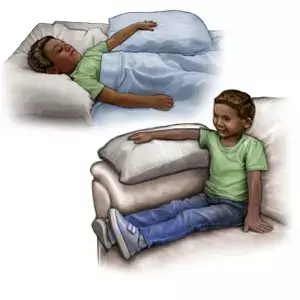- Home
- Medical news & Guidelines
- Anesthesiology
- Cardiology and CTVS
- Critical Care
- Dentistry
- Dermatology
- Diabetes and Endocrinology
- ENT
- Gastroenterology
- Medicine
- Nephrology
- Neurology
- Obstretics-Gynaecology
- Oncology
- Ophthalmology
- Orthopaedics
- Pediatrics-Neonatology
- Psychiatry
- Pulmonology
- Radiology
- Surgery
- Urology
- Laboratory Medicine
- Diet
- Nursing
- Paramedical
- Physiotherapy
- Health news
- Fact Check
- Bone Health Fact Check
- Brain Health Fact Check
- Cancer Related Fact Check
- Child Care Fact Check
- Dental and oral health fact check
- Diabetes and metabolic health fact check
- Diet and Nutrition Fact Check
- Eye and ENT Care Fact Check
- Fitness fact check
- Gut health fact check
- Heart health fact check
- Kidney health fact check
- Medical education fact check
- Men's health fact check
- Respiratory fact check
- Skin and hair care fact check
- Vaccine and Immunization fact check
- Women's health fact check
- AYUSH
- State News
- Andaman and Nicobar Islands
- Andhra Pradesh
- Arunachal Pradesh
- Assam
- Bihar
- Chandigarh
- Chattisgarh
- Dadra and Nagar Haveli
- Daman and Diu
- Delhi
- Goa
- Gujarat
- Haryana
- Himachal Pradesh
- Jammu & Kashmir
- Jharkhand
- Karnataka
- Kerala
- Ladakh
- Lakshadweep
- Madhya Pradesh
- Maharashtra
- Manipur
- Meghalaya
- Mizoram
- Nagaland
- Odisha
- Puducherry
- Punjab
- Rajasthan
- Sikkim
- Tamil Nadu
- Telangana
- Tripura
- Uttar Pradesh
- Uttrakhand
- West Bengal
- Medical Education
- Industry
Mini-open approach to medial pinning in pediatric supracondylar humeral fractures safer than previously thought

Displaced pediatric supracondylar humeral fractures (SCHFs) are stabilized after reduction by smooth pins. Although some SCHFs are biomechanically stable after lateral-only entry pinning (lateral pinning), an additional medial entry pin (cross-pinning) confers superior stabilization in some SCHFs. There is a recognized risk of iatrogenic ulnar nerve injury with medial entry pinning. The best existing evidence has estimated an iatrogenic ulnar nerve injury rate of approximately 3.4% in cross-pinning. In similar studies, the rate of iatrogenic nerve injury (all nerves) in lateral pinning is estimated at 1.9%.
Andrew B. Rees et al conducted a study to use a large, single-center, single-technique (mini-open) retrospective case series to determine the rate of iatrogenic ulnar nerve injury in cross-pinning. Investigation performed at Vanderbilt University Medical Center, Nashville, Tennessee. The study has been published in ‘the journal of bone and joint surgery.’
Patients undergoing percutaneous cross-pinning via the mini-open technique for SCHFs from 2007 to 2017 were retrospectively reviewed. Injury characteristics, operative variables, fixation technique, and complications, such as iatrogenic nerve injury, were recorded. Patients who underwent operative treatment at another hospital, had no postoperative follow-up, or died due to polytrauma were excluded.
Key findings of the study were:
• In this study, 698 patients undergoing cross-pinning during the study period were identified.
• Patients treated with cross-pinning had severe fractures, including a total of 198 preoperative neurovascular injuries (28.4%), 32 patients (4.6%) with skin tenting, and 19 patients (2.7%) with open fractures.
• Iatrogenic nerve injury was reported in 3 cases (0.43%), all of which affected the ulnar nerve. In 2 of 3 cases of iatrogenic nerve injury, the ulnar nerve symptoms resolved at a mean follow-up of 15 weeks.
• The rates of other complications included loss of fixation (9 patients [1.3%]), osteonecrosis (1 patient [0.1%]), and reoperation (22 patients [3.2%]).
The authors concluded that – “The mini-open approach for medial pin insertion is safer than previous estimates. Here, in the largest single-center study of cross-pinning for SCHFs, the iatrogenic ulnar nerve injury rate of 0.43% was nearly 10 times lower than estimated rates from recent meta-analyses. Considering all nerves, the iatrogenic injury rate for this cross-pinning cohort was also lower than the estimated iatrogenic nerve injury rate for lateral pinning.”
Level of Evidence: Therapeutic Level IV.
Further reading:
A Mini-Open Approach to Medial Pinning in Pediatric Supracondylar Humeral Fractures May Be Safer Than Previously Thought
Andrew B. Rees, Jacob D. Schultz et al
THE JOURNAL OF BONE AND JOINT SURGERY, 2022;104:33-40
http://dx.doi.org/10.2106/JBJS.21.00301
MBBS, Dip. Ortho, DNB ortho, MNAMS
Dr Supreeth D R (MBBS, Dip. Ortho, DNB ortho, MNAMS) is a practicing orthopedician with interest in medical research and publishing articles. He completed MBBS from mysore medical college, dip ortho from Trivandrum medical college and sec. DNB from Manipal Hospital, Bengaluru. He has expirence of 7years in the field of orthopedics. He has presented scientific papers & posters in various state, national and international conferences. His interest in writing articles lead the way to join medical dialogues. He can be contacted at editorial@medicaldialogues.in.
Dr Kamal Kant Kohli-MBBS, DTCD- a chest specialist with more than 30 years of practice and a flair for writing clinical articles, Dr Kamal Kant Kohli joined Medical Dialogues as a Chief Editor of Medical News. Besides writing articles, as an editor, he proofreads and verifies all the medical content published on Medical Dialogues including those coming from journals, studies,medical conferences,guidelines etc. Email: drkohli@medicaldialogues.in. Contact no. 011-43720751


